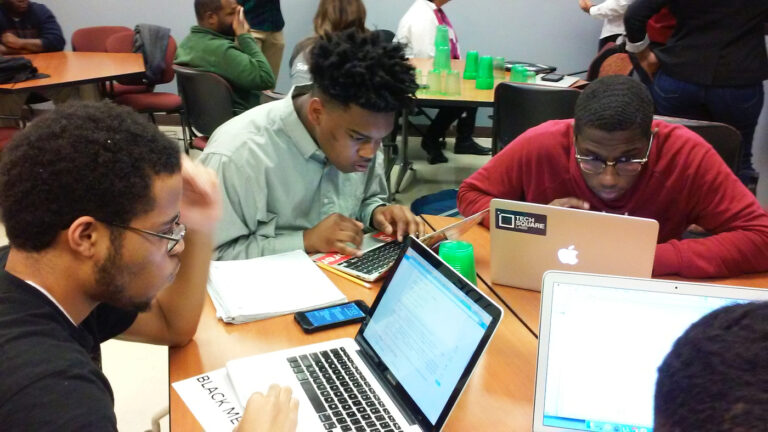Government Grants (How to Apply for Grants) – A Detailed Guide
As the 2026 school year approaches, many families and students are beginning the exciting yet sometimes overwhelming process of applying to high schools. Whether you’re applying to a public or private school, understanding the application process, including requirements and deadlines, is essential to ensure a smooth transition into high school.
In this article, we will provide you with a detailed overview of the high school application process for 2026, including everything from the types of schools available, general application requirements, key deadlines, and tips for success. By the end, you will have a clear understanding of how to navigate the high school application process and secure a spot at your desired institution.
Table of Contents
- Introduction to High School Applications
- Types of High Schools
- High School Application Requirements
- How to Apply for High School in 2026
- Key Deadlines for High School Applications 2026
- Tips for a Successful High School Application
- What Happens After Submitting Your High School Application?
- Conclusion and Final Thoughts
- Start Your Application Today: [Link to Application Portal]
1. Introduction to High School Applications
The high school application process can seem daunting, especially if this is your first time going through it. High schools typically require prospective students to submit an application that includes personal information, academic history, and sometimes additional materials, such as essays or letters of recommendation.
Whether you are applying to a public school, a private school, or a charter school, it’s essential to be well-prepared and organized. This article will guide you through the essential steps and help you stay on track as you submit your application.
2. Types of High Schools
Before diving into the application process, it’s important to understand the different types of high schools you may be applying to. Each type has its own set of requirements and application process.
1. Public High Schools
Public high schools are government-funded institutions and are typically free to attend. They are usually assigned based on your home address and the district you live in. Many public high schools have an open enrollment policy, meaning that as long as you live within the district, you can apply and attend. However, some districts may have specialized programs that require an application.
2. Private High Schools
Private high schools are privately funded and may charge tuition. These schools often have their own application process, which may include entrance exams, interviews, essays, and letters of recommendation. Private schools may have more selective admission criteria, and it is important to research each school’s specific requirements.
3. Charter Schools
Charter schools are publicly funded but operate independently of the local public school district. These schools often offer specialized programs and have their own application process, which may include a lottery system, interviews, or other selection criteria. Charter schools may be free to attend or have tuition fees depending on the region.
4. Magnet Schools
Magnet schools are specialized public schools that offer focused programs in subjects like science, technology, the arts, or humanities. They often have a competitive application process and may require academic testing, portfolios, or auditions.
3. High School Application Requirements
Each school may have its own unique application requirements, but here are the general components you can expect to encounter during the application process:
1. Personal Information
The application will ask for basic information such as your full name, contact details, and address. This information is essential to ensure that the school can communicate with you about the status of your application.
2. Academic Transcripts
Most high schools will ask for transcripts from your current school to understand your academic performance. Be prepared to submit records of your grades, standardized test scores (if applicable), and any other relevant academic information.
3. Letters of Recommendation
Some private and magnet schools may require letters of recommendation from teachers, school counselors, or community leaders. These letters should speak to your character, work ethic, and academic abilities.
4. Essays or Personal Statements
Many schools require applicants to submit a personal statement or essay. This is your opportunity to highlight your strengths, discuss why you are interested in attending the school, and explain what you hope to gain from the experience. Pay attention to any specific prompts or questions provided by the school.
5. Entrance Exams or Auditions
Some schools, particularly private, charter, or magnet schools, may require an entrance exam, audition, or interview as part of the application process. These requirements vary depending on the program and school.
6. Application Fee
Some private or specialized schools charge an application fee. Be sure to check if there are any fees associated with the application and ensure that you submit payment on time if required.
7. Interview (Optional or Required)
Certain schools may require or offer interviews as part of the admissions process. During the interview, you may be asked about your academic interests, extracurricular activities, and why you want to attend that particular school.
4. How to Apply for High School in 2026
The application process can vary depending on the school, but here is a general step-by-step guide on how to apply for high school in 2026:
1. Research Schools
Start by researching the schools you’re interested in. Consider factors such as location, programs offered, extracurricular activities, and school culture. Make a list of the schools you would like to apply to.
2. Review Application Requirements
Once you have a list of schools, visit each school’s website to review the specific application requirements. Take note of deadlines, required documents, and any entrance exams or interviews that may be necessary.
3. Gather Required Documents
Prepare all the necessary documents for each application. This may include your academic transcripts, letters of recommendation, essays, and standardized test scores.
4. Complete the Application Forms
Fill out the application forms for each school. Be sure to answer all questions accurately and completely. If you’re applying to multiple schools, make sure to customize your answers to fit each school’s specific requirements.
5. Submit Your Application
Once you’ve completed all the required forms and documents, submit your application online or via mail, depending on the school’s preference. Be mindful of deadlines and ensure that you submit your application on time.
6. Follow Up
After submitting your application, follow up with the school to confirm that they received all necessary materials. Some schools may provide you with updates or requests for additional documents.
5. Key Deadlines for High School Applications 2026
The deadlines for high school applications vary by school and type of school. Here’s a general timeline to help you plan:
Public High Schools:
- Application Deadline: Most public school districts have a set application deadline, typically between January and March for the following school year. Be sure to check with your local district.
Private High Schools:
- Application Deadline: Private schools often have earlier deadlines, with many applications due between October and December of the year prior to enrollment. You may also need to schedule an entrance exam or interview within this period.
Magnet and Charter Schools:
- Application Deadline: Charter and magnet school applications often have deadlines in the fall or early winter, with some requiring applications by December or January.
6. Tips for a Successful High School Application
To maximize your chances of success, follow these tips:
- Start Early: Begin the application process as early as possible. Gather documents, plan for exams, and write your essays well in advance of the deadline.
- Stay Organized: Keep track of all deadlines, documents, and application requirements for each school.
- Write a Strong Personal Statement: Be honest and reflective in your personal statement or essay. Focus on your strengths, academic interests, and personal goals.
- Request Recommendations Early: Reach out to teachers and mentors early to request letters of recommendation. Provide them with plenty of time to write thoughtful letters.
7. What Happens After Submitting Your High School Application?
After you submit your high school application, here’s what you can expect:
1. Application Review
The school will review your application, including your transcripts, essays, recommendation letters, and other materials.
2. Interviews and Testing
If required, you may be invited for an interview or entrance exam. Be prepared to discuss your academic goals, extracurricular activities, and why you are a good fit for the school.
3. Acceptance or Rejection
Once the review process is complete, you will receive notification of your acceptance or rejection. Some schools may offer you a place on a waitlist.
4. Final Decision
If accepted, you will need to make a decision about whether to accept the offer. Be sure to confirm your enrollment by the deadline provided by the school.
The high school application process can be competitive and time-consuming, but with proper preparation and organization, you can make the process more manageable. By understanding the application requirements, adhering to deadlines, and presenting yourself in the best possible light, you can increase your chances of gaining admission to your desired high school.
Remember to start early, gather all necessary documents, and put thought and care into your application. Good luck with your high school journey in 2026!
Start Your Application Today: Link to Application Portal




